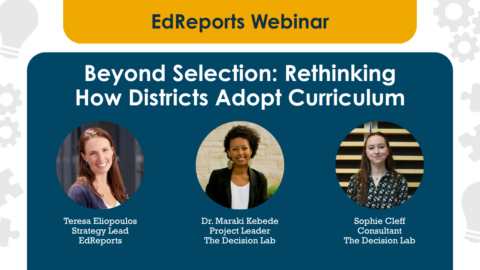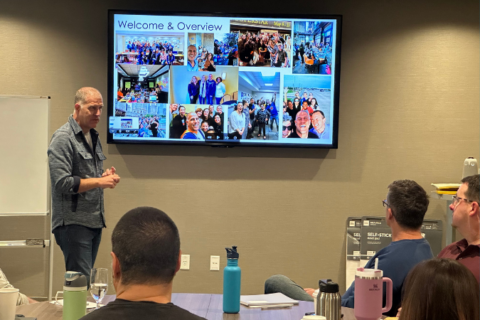5 Keys to Successful Consensus When Selecting New Curricula
A school district uses consensus protocols to overcome divisions when selecting new materials.
Related Resources
case-study
Building Capacity and Consensus Through a Teacher-Led Materials Adoption
Read about the challenges Newport-Mesa Unified School district faced, the important steps they took to ensure success, and the role EdReports played in their journey of instructional materials adoption.
video
Webinar—Beyond Selection: Improving Curriculum Adoption
Discover insights from EdReports and The Decision Lab on evolving curriculum adoption to better support teachers and boost student outcomes.
news
EdReports CEO Eric Hirsch to Step Down in 2026
After a decade of transformative leadership, Hirsch will remain through June 2026 to support a seamless transition as EdReports begins its next chapter of impact and innovation.


